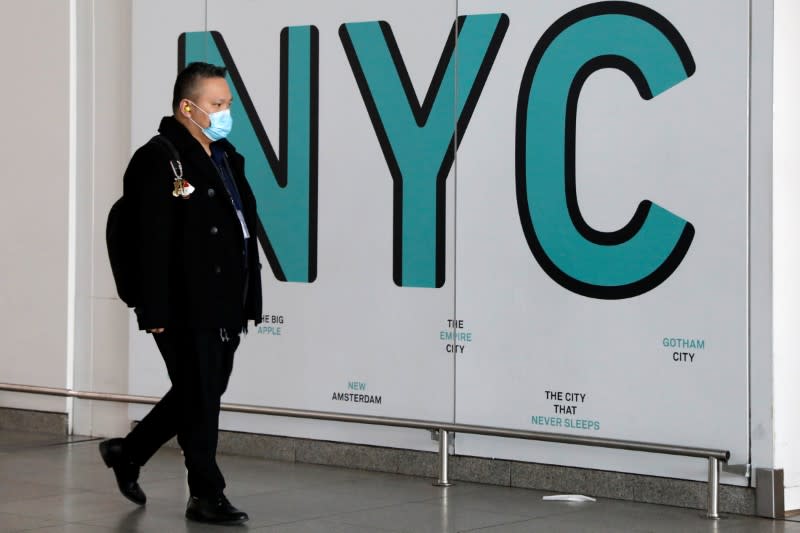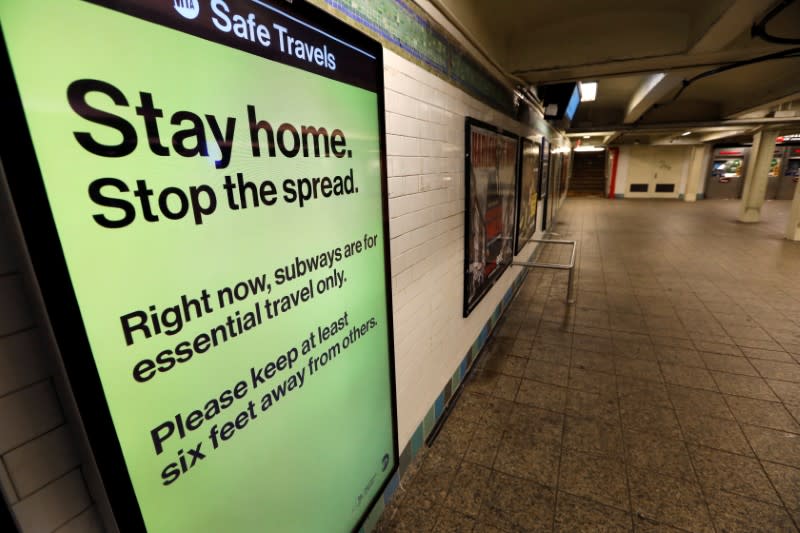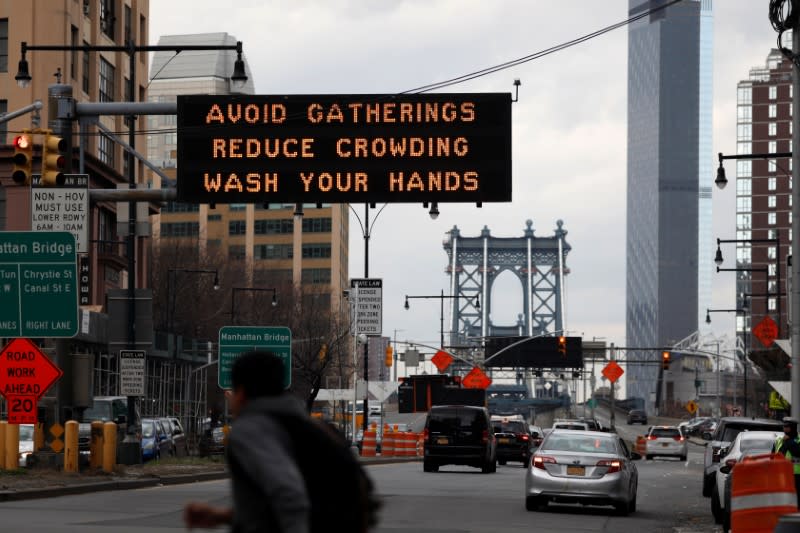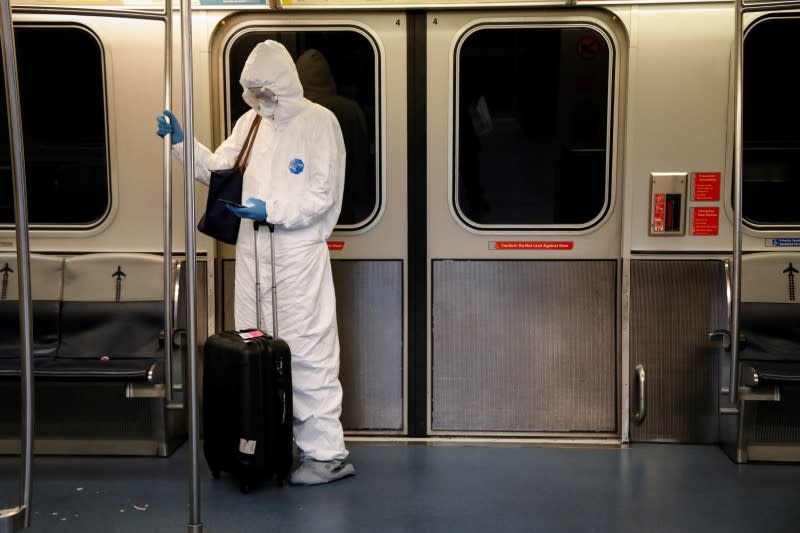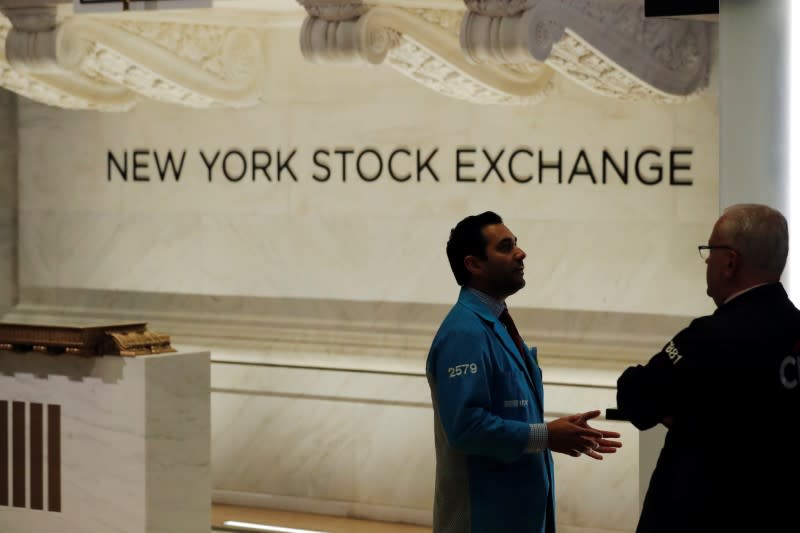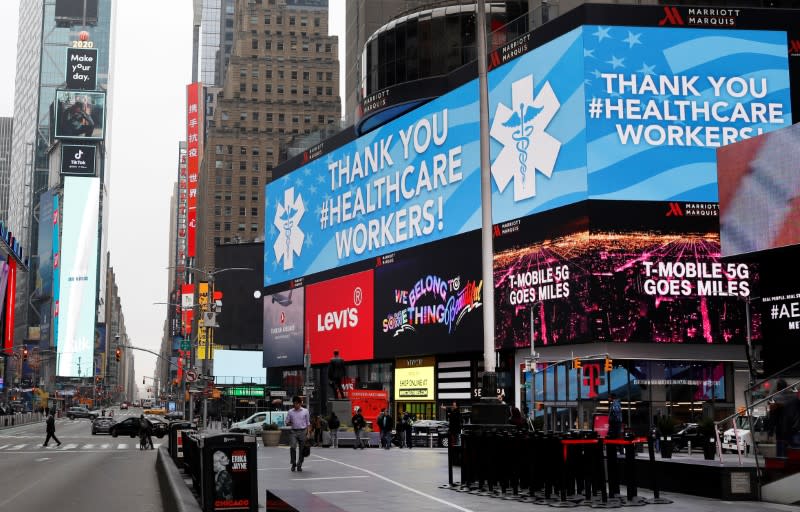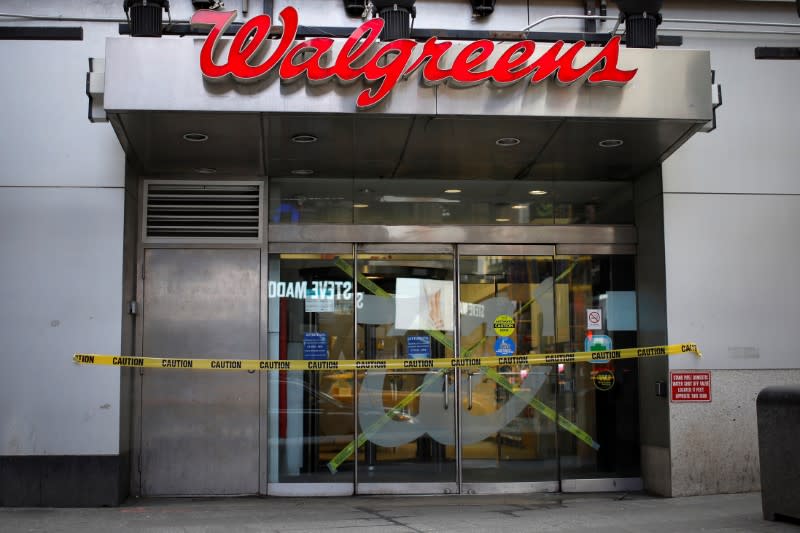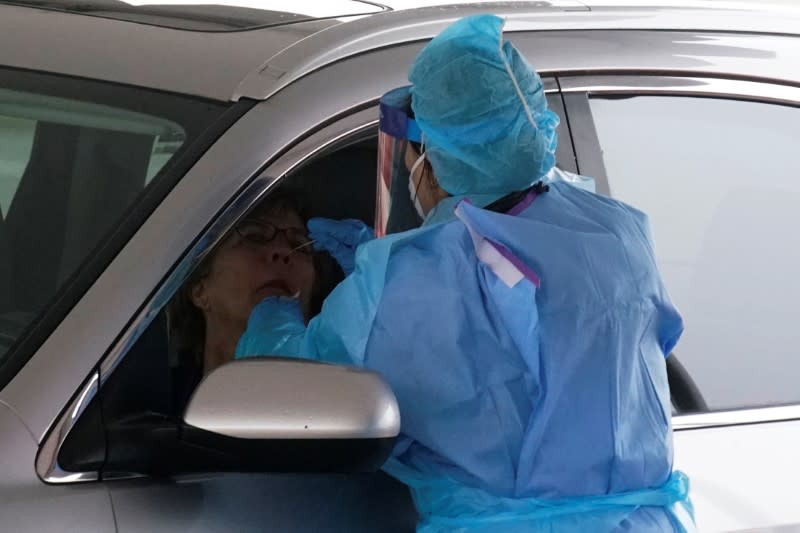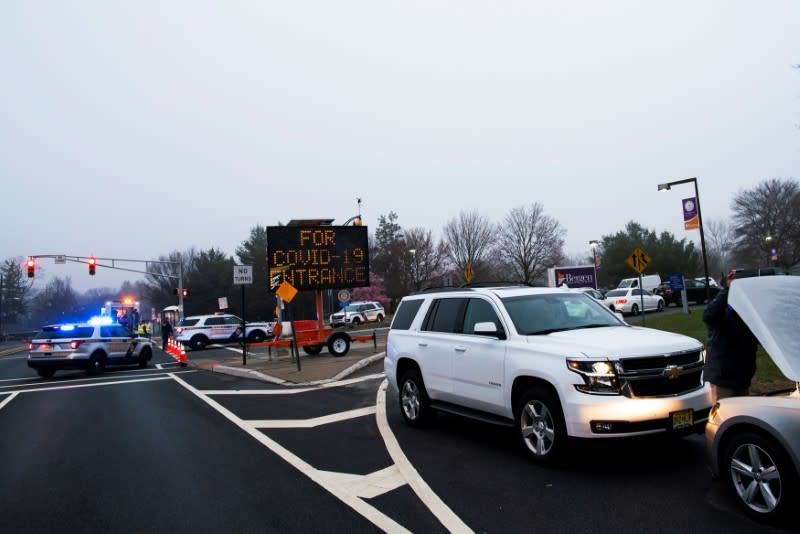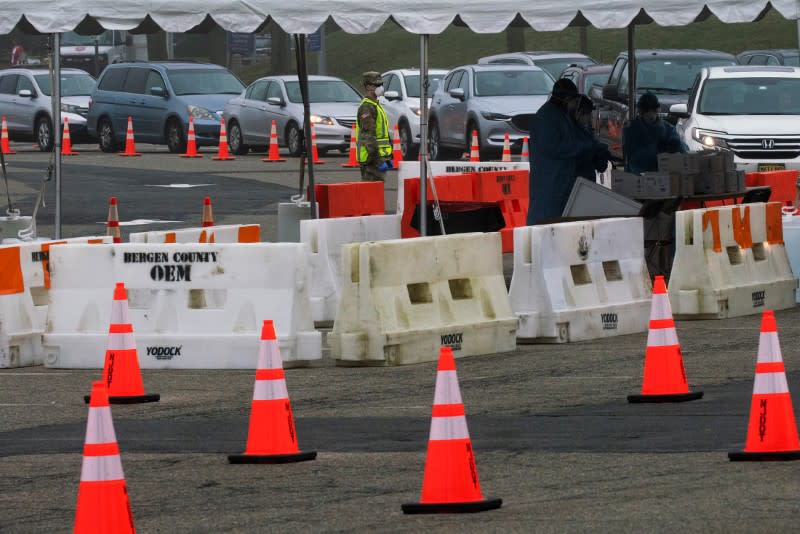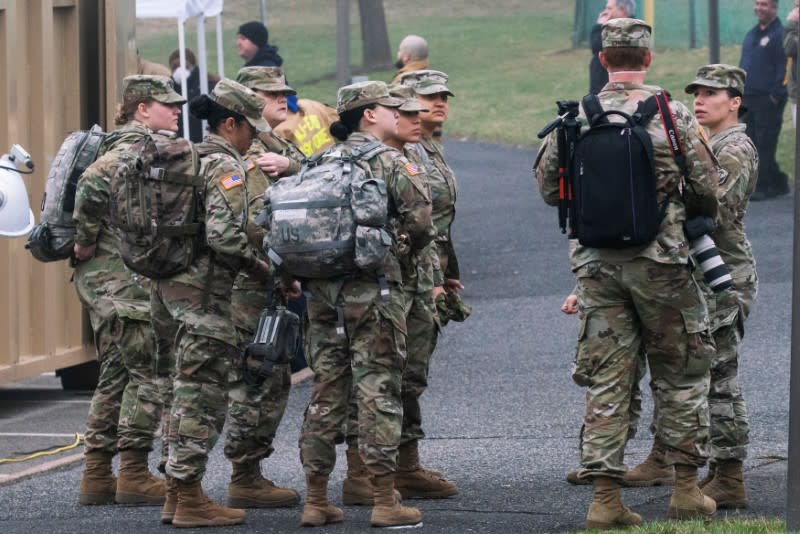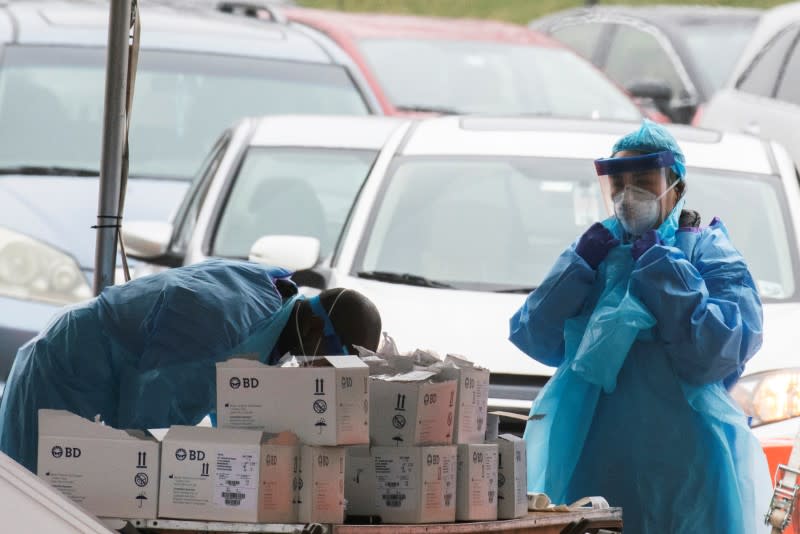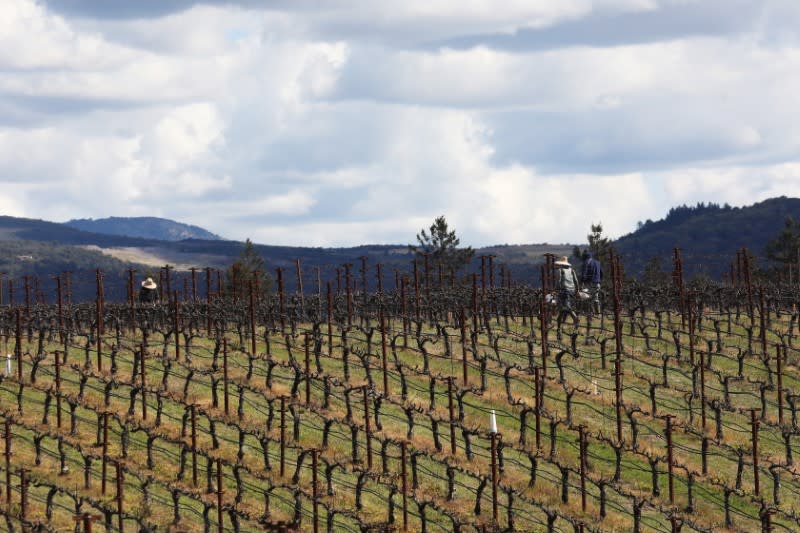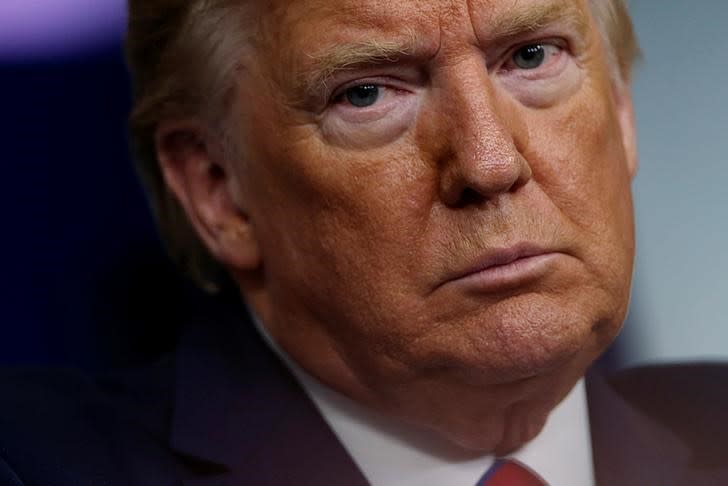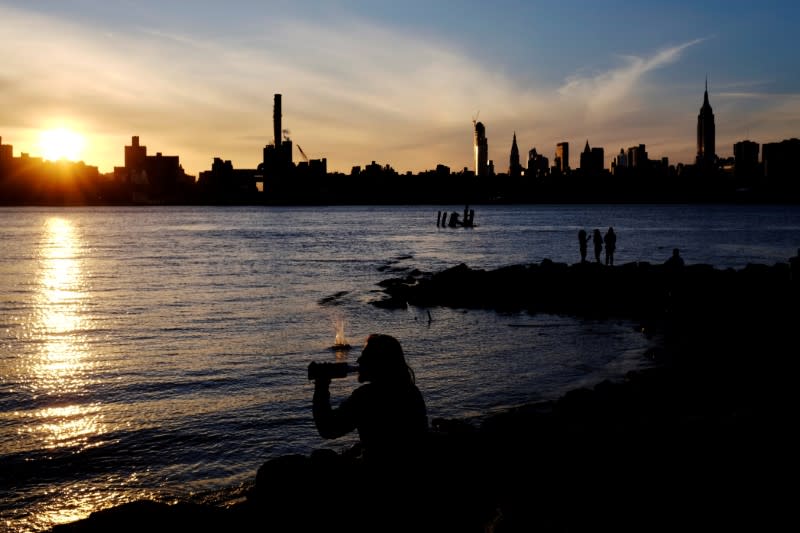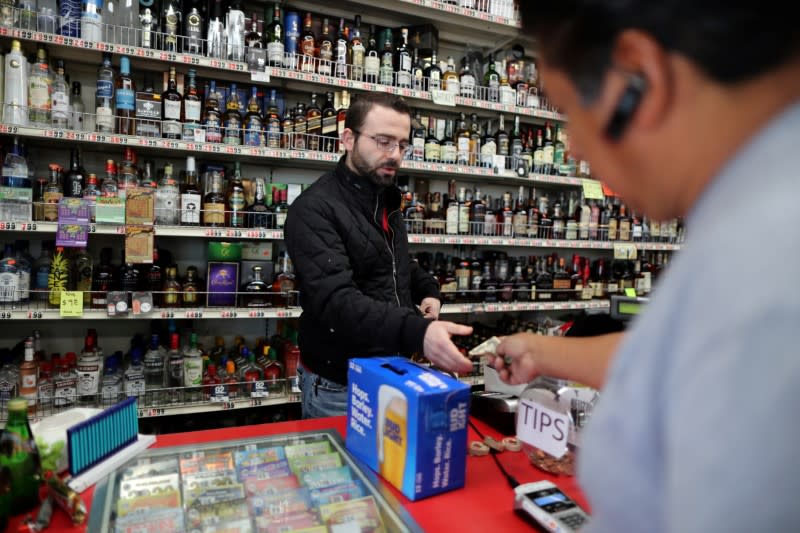Stay-at-home orders in major states mark next phase of U.S. coronavirus crisis
By Lisa Richwine and Gabriella Borter
LOS ANGELES/NEW YORK (Reuters) - New York state, Illinois and Connecticut on Friday followed California in directing tens of millions of people to stay at home in the most sweeping U.S. social-distancing measures yet imposed for the escalating campaign to curb transmission of the coronavirus.
The unprecedented restrictions, impacting more than 75 million people, or nearly a quarter of the U.S. population, order most workplaces to close and require residents to remain inside except for trips to grocery stores, pharmacies, gas stations and other "essential businesses."
New Jersey Governor Phil Murphy said he planned to issue similar directives within the next 24 hours.
"To avoid the loss of tens of thousands of lives we must order an immediate shelter-in-place," Illinois Governor J.B. Pritzker said on Friday, using a term that has commonly referred to self-protection measures exercised during mass shootings. Illinois, which includes Chicago, has recorded 585 cases of the disease including five deaths.
Even as a growing number of ordinary Americans came under orders to keep to themselves, the pandemic crept closer to the highest levels of power in the nation's capital.
An aide to U.S. Vice President Mike Pence, leading the White House task force formed to battle the outbreak, tested positive for the virus, but neither President Donald Trump nor Pence have had close contact with the individual, Pence's press secretary Katie Miller said in a statement on Friday.
The five states where governors have banned or will soon ban non-essential businesses and ask residents to stay home account for about 31% of the U.S. economy, the world's largest.
In New York City's Central Park, several bikers and joggers were on the pathways, mostly alone but a few in pairs.
"It's real and it's scary, I hate it," said physical therapist Kerry Cashin, 49, of the stay-at-home order. "I feel like I always knew it was going to go this way, but it made me scared."
Just two dozen people milled outside Hollywood's Dolby Theatre in Los Angeles, home of the Oscars and normally teeming with hundreds of tourists.
Zane Alexander, 27, said he was on his way to pick up his last paycheck "until Lord knows when." He had been working on a medical marijuana dispensary's street team, but the group was disbanded until further notice.
"It's totally understandable," Alexander said, adding, "I sure wish it weren't the case."
Retiree Jerry Rasmussen, 73, sat on a sunny public bench reading the San Francisco Chronicle in that city's Cole Valley neighborhood, with hand sanitizer, gloves and a mask beside him.
"I figure being outdoors like this is pretty safe, as long as I'm not too close to anyone," he said.
VENTILATORS NEEDED
Cuomo, in issuing New York's stay-at-home directive, said his state of nearly 20 million people faces a shortage of medical personnel and supplies such as ventilators and protective masks as it struggles with a public health crisis threatening to overwhelm its healthcare system.
"The ventilators are to this war what missiles were to World War Two," Cuomo said, adding the state would "pay a premium" for extra stocks of personal protective equipment. He urged companies capable of making such products to "get creative."
The coronavirus pandemic sweeping the globe has paralyzed large parts of the economy and upended lifestyles across the United States over the past week, shuttering schools and businesses, prompting millions to work from home and forcing many out of jobs while curtailing travel.
The health orders announced on Thursday by California Governor Gavin Newsom on the state's 40 million people allow for outside exercise as long as people stay 6 feet apart.
"I wish he'd done it a week ago," said David Anderson, 42, a TV writer-director waiting in line outside a pharmacy in the Los Angeles suburb of Glendale to buy anti-nausea medicine for his wife, who is 12-weeks pregnant and home with their young son. "I guess I'm shocked that it took this long for these measures to be put in place."
The total number of known U.S. infections has climbed past 18,000, including at least 250 deaths as of Friday evening, with the surge in cases over the past few days reflecting an increase in diagnostic testing. Health experts believe the actual number of COVID-19 cases to be far higher.
Click https://tmsnrt.rs/3dkIMIL for a GRAPHIC on U.S. cases.
Nearly 1,200 cases have been confirmed in California, where at least 23 people have died. New York state reported 39 deaths out of almost 8,000 cases, more than half of them in New York City, the nation's largest metropolis. Its second and third are Los Angeles and Chicago.
Washington state, which documented the first known U.S. coronavirus case in January and now accounts for the greatest number of deaths - 83 as of Friday - has since March 16 closed bars, restaurants and recreation and entertainment facilities, and has banned all gatherings of more than 50 people.
Connecticut, which confirmed its fourth coronavirus-related death on Friday out of 194 infections, became the latest state to unveil a "stay safe, stay at home" program calling on all non-essential businesses to close for the foreseeable future.
The state directives, mirroring what many local governments across the country had recently imposed, were for the most part issued without strict enforcement mechanisms to back them up.
"Summons and arrests is an option, but obviously that's a last resort," New York City Police Commissioner Dermot Shea told reporters, saying authorities would focus on urging New Yorkers to follow the new rules.
For a graphic on Coronavirus news:
https://emea1.apps.cp.extranet.thomsonreuters.biz/cms/?navid=919104201
For a graphic on Tracking the spread of the global coronavirus:
https://graphics.reuters.com/CHINA-HEALTH-MAP/0100B59S39E/index.html
For a graphic on The novel coronavirus in the United States:
https://graphics.reuters.com/HEALTH-CORONAVIRUS-USA/0100B5K8423/index.html
(Reporting by Lisa Richwine in Los Angeles and Gabriella Borter in New York; Additional reporting by Lucy Nicholson, Katie Paul, Nathan Layne, Bill Berkrot, Doina Chiacu, Susan Heavey, Nick Brown, Jonnelle Marte, Ann Saphir, Dan Whitcomb and Jonathan Allen; Writing by Grant McCool and Steve Gorman; Editing by Howard Goller and Daniel Wallis)

 Yahoo News
Yahoo News 